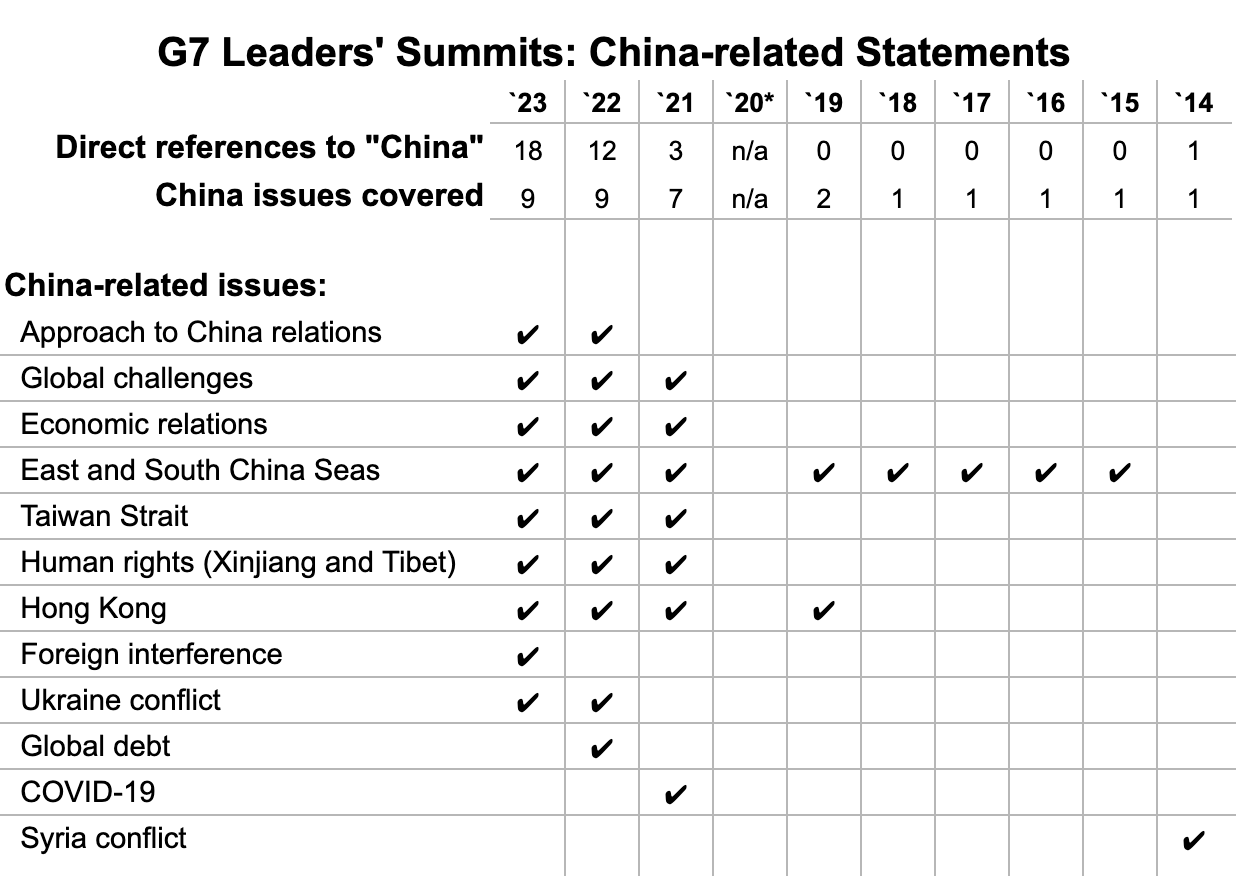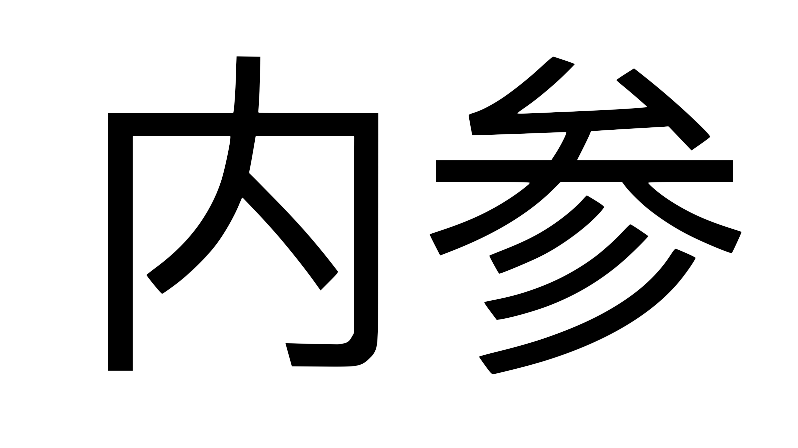Brief #148: G7 Hiroshima Summit (2023)
This year’s G7 leaders’ summit took place in Hiroshima, Japan, from May 19 to 21. The meeting produced two documents relevant to China policy: the G7 Hiroshima Leaders’ Communiqué and the G7 Leaders’ Statement on Economic Resilience and Economic Security.
The main takeaway from the G7 Hiroshima Summit on China is that the group’s members are presenting a more collective and tougher approach to their relations with China. This approach is based on “de-risking and diversifying” instead of “decoupling.” The focus has also been put on Beijing’s “economic coercion.”
It is still unclear what “de-risking” will mean in practice, but what is clear is that Beijing sees the move from “decoupling” to “de-risking” as merely a rhetorical shift. For example, one People’s Daily editorial declares that “the so-called ‘de-risking’ language, in essence, is about continuing to construct ‘small yards with high fences’ to instigate ‘decoupling’.”
More broadly, China has become a greater focus in recent years for the G7. From 2014 to 2019, statements from the G7 leaders’ summits made scant references to China. This changed in 2021 and 2022.

The first section of this brief looks at the China-related statements from this year’s G7 summit. The second section provides a reference list of all China-related statements from G7 summits since 2014 (when the group came into its current form after Russia was expelled from the G8).
G7 Hiroshima Summit
For the first time since 2014, the G7 has produced a statement on China that houses different China-related issues in one section instead of dividing them based on issues.
The China section of the G7 Hiroshima Leaders’ Communiqué contains two paragraphs (paras 51 and 52). The first paragraph outlines the nine “elements” that underpin G7 members’ respective relations with China. The Second paragraph re-emphasises the group’s rejection of China’s maritime claims in the South China Sea.
Approach to China Relations
The Communiqué states that acting in their national interest, the G7 members “stand prepared to build constructive and stable relations with China.” While not “decoupling or turning inwards,” the G7 members will build economic resilience by “de-risking and diversifying.” Their “policy approaches are not designed to harm China nor…thwart China’s economic progress and development.”
Whatever terms one adopts - “decoupling”, “de-risking”, or “diversifying” - and however one characterises the intent of policy approaches, there is little doubt that Beijing sees certain actions by G7 members as detrimental to China’s national interest. For example, it’s hard to argue that the US government’s attempt to thwart China’s technological progress through export controls on semiconductors is “not designed to harm China”.
Global Challenges
The Communiqué states it is “necessary to cooperate with China” on “global challenges” and calls for China to engage with G7 members on areas such as the climate, biodiversity, development debt and global health.
There are no significant changes in language between the 2023 and 2022 communiqués on global challenges.
Economic Relations
The Communiqué states that the G7 members will address the challenges posed by “China’s non-market policies and practices”, “counter malign practices, such as illegitimate technology transfer”, and “foster resilience to economic coercion”.
In contrast, the language of the 2022 communiqué was more tentative: “we [G7 members] will continue to consult on collective approaches to challenging non-market policies and practices which undermine the fair and transparent operation of the global economy.”
The commitment to “continue to consult on collective approaches” has now morphed into a will to address China-related economic challenges. However, it is still unclear what a collective G7 approach would look like in practice.
East and South China Seas
